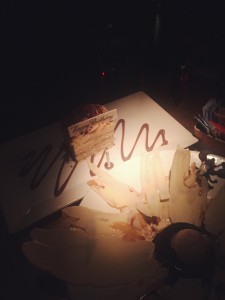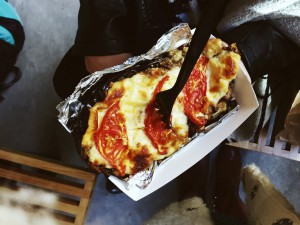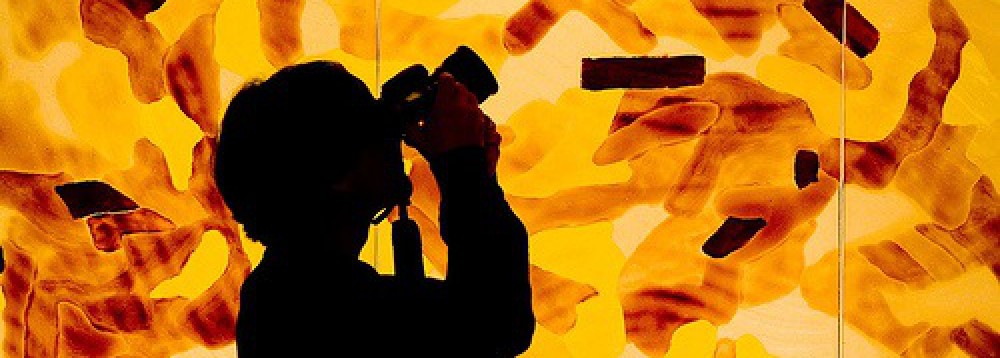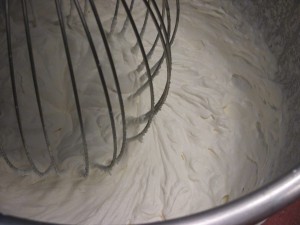The more I scrolled down the more I laughed not because I was mocking these idols but because have of these things I can relate to. We all have our craving, though Busta Rhymes is a lil creepy, I don’t want to know why he would need condoms while eating, but that’s what calms him down. These are their comfort foods. Their childhood favorite, even something they can’t have on a regular basis and now a GOLDEN door of opportunity has opened up for them. Foo Fighters is one that really had me crying, because just looking at something like that I feel sorry for those “self-conscious” men out there.
Category Archives: Response
HW 10: Backstage Riders
Henry Hargreaves’s photo series is truly interesting work that requires a big thought and/or effort to it. I love the way photographs are set up, the arrangement reminds me of a still life commercial or editorial. There is a great sharp contrast between a dark background and the subject in every shot. I agree with the photographer, these works do offer us a glimse into the celebrities’ lives and portray the famous musicians’ personalities. Every performer’s decription is very specific, which make them all different so we can actually identify some of these people. I also have noticed that the foods celebrities request are quite unhealthy. It must be some kind of comfort foods that help them ease the nerves before performing.
HW 9: Robert Frank
I think that Robert Frank’s photographs are artistic. They are some sort of a metaphor of the relationship between one individual and whole nation. To him, artistic is simple. In his works, Frank tries to bring out the idea of one person being a buidling block of the society and how one could relate to a country as a whole. His themes consist of ordinary and lonely people, politics and religion. Robert Frank’s goal is to figure out what the world is like so he uses the photography to share his personal vision with others.
hw # 9 Robert Frank
ARTH1101
Stefania Koziolek
hw #9
“The Americans “by Robert Frank is regarded as one of the most influential photographic project of the 20th century.It consisted of 83 black photographs from his journey which showed a different America.When I first saw work from “The Americans “ I could make no sense of it. It wasn not artistic at all. It showed view of American society. How American people used to see themselves in their country. Frank’s subjects weren’t necessarily living the American dream of the 1950s: They were factory workers, black passengers in the trains. Making a bold attempt to indicate the direction in which America is heading in the second half of the 1950s, Frank goes beyond the traditional canons of photographic documentation. On the pages of the album draws a portrait of two-faced photographer of the American public. Economic growth, consumerism and higher demographic, which in America became the foundations for the shallow optimism of the Decade of the 1950s, have been compiled with images of past bitter face of America. Rising social tensions, the collapse of authority figures and national symbols, as well as departure from the Christian values-this turned out to be the fate of America in the 1960s, in which Frank tried to warn people.In my opinion it is not really artistic. However, I like them. We can see how much America changed since that time. Franks’ photographs photograph’s has inspired a lot of photographers across all genres.
HW #8: Capa’s “Death of a Loyalist Soldier”
Over the years, people have argued that Robert Capa’s “Death of a Loyalist Soldier” is a staged photograph and I can clearly see why they doubted its authenticity. In the shot, the Spanish soldier appears to be falling back after being hit by a bullet and shot at the moment of death. It is truly amazing how Capa was able to capture that exact moment and this is a reason why it is hard for the viewers to believe that the shot was real and just captured at the right time at the right place. I personally believe Capa didn’t stage the shot. To me, the most effective reason why the photograph is real is the soldier’s position, the way he is falling back and his face expression which portrays real pain. In fact, the photographer put his own life at risk when going to the battle fields to get true photographs and document what was happening during the Spanish war. This is a photojournalism, not fake.
HW 6: Picturing Breakfast Around The World
In my culture, children are always told: “Eat breakfast yourself, share lunch with a friend and leave dinner for an enemy”. I grew up following this phrase and I can’t imagine a good day without having a breakfast. In American society, especially if living in NYC, during a busy morning, it’s easy to let breakfast fall low in your list of priorities, but just a few minutes to make something easy but filling to eat can really make a difference to your day. Breakfast provides the body with fuel and energy after an overnight fast. It is a good source of important nutrients and vitamins such as calcium, protein, iron and many more. While reading the New York Times article “Rise and Shine” about what kids around the world eat for breakfast, I was amazed how the world cultures can differ from each other presenting such a wide variety of the meals consumed by people from different countries. Yet, most of them have displayed that having breakfast is important. Many studies of children have shown that it is the best way to improve memory and concentration levels as well as attainment, behavior and better grades. I believe that fruit and vegetables contain daily portion of vitamins and minerals so I try to include them in my meal to get through m y day.
y day.
Quince and Chia Greek Yogurt
HW 5: Subway Portraits
It’s amazing and unique how Walker Evans came up with an idea of hiding the camera under his coat to capture people in the subway lost in their own thoughts and moods. It’s interesting to think about different people’s everyday routines, where they all go, what they do and who they are. Evans made a good decision keeping everyday commuters unaware of him taking photographs because when we all see a camera we naturally pose hiding our true face expressions and this would ruin the whole point of his style of photography. Walker Evans managed to capture the passengers on the NYC subway minding their own business in these unguarded moments, displaying a range of human emotions. He has created unposed portraits.
I’m my opinion, not much has changed from the time Evans took these photographs. Nowadays, the majority travels in the subway train with the same face expression which usually makes others feel like they don’t want to be bothered. We all use the subway rushing to get to our destinations, at the same time unwittingly people-watching.
A whip’s point of view
In this photo I took a a picture, during the week I was chef, of us making our very own whip cream. It was fascinating the way we took heavy cream and just mixed it (whipped it) for a couple of minutes and added some other things to make it sweet, and viola you have whip cream. The smell, especially the texture I had to capture the moment, surprisingly this was taken while the whip was moving, I’m not too sure how I did it, but I’m shocked by what I captured. The texture of the whip cream looks fluffy, and smooth, but also though its airy, from in this picture it looks as if it would have a play-doh feel once you get it in your hands.
HW 4: Food and Status in History
I believe food has become a significant part of people’s lives and it helps in bringing them together. Food promotes diversity and tolerance because it is a universal language that brings all different cultures close. Therefore, dining is an important part of any event such as weddings, birthday celebrations, business meetings, and even everyday family dinners. Especially nowadays, it has become a tradition that gives us the opportunity to gather, share, connect with other people and present ourselves to them over food. The preparation of food also helps bring people together and it is often one of the traditional experiences that bind family generations together.

HW 3: Photographing Texture in Food
Food photography is all about texture and color. It is crucial to have a nice “feel” when looking at the image. The human eye can look at something and see details that the camera most likely can not capture so the photographer must use lighting to bring out the texture in order to make the dish look appeling and inviting. This is a picture of a Greek Moussaka – an eggplant-based dish, often including ground beef and tomatoes with cheese on top. My friend and I took this photograph while attending Smogasburg food market in Industry City Studios in Sunset Park. Moussaka has a delicious taste to it. Very tender, juicy and smooth. Grilled cheese and tomatos on top make the dish very appertizing. 




